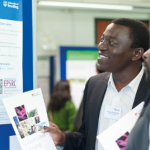The latest in the series of ‘Technology, Strategy and Business Models’ workshops was held at Cass Business School, City University London from 2-3 September 2014. Dr. Sunila Lobo presented her work on her thoughts regarding the potential for co-creating and capturing value in the complex business ecosystem of construction megaprojects; so firms in ‘loosely coupled networks can share complex and usually un-codified knowledge and co-evolve their capabilities to create more value and improve efficiency’ (Williamson and De Meyer, 2012). These workshops are organized by the business models group at CENTIVE, Cass Business School and are for junior faculty across Europe to present their work and receive feedback from the community. Senior faculty also present their leading edge work and the sessions are highly interactive. Participants from France, Austria, Switzerland, and the UK attended.
This 2-day workshop was preceded by a meeting called ‘Better Business Models’ on the 1st of September 2014, to update senior faculty on work carried out since the December 2013 conference on Business Models and to discuss next steps regarding research on business models. Dr. Sunila Lobo updated this senior group on work being carried out at the Design Innovation Research Centre, on behalf of Prof. Whyte.
For more information, please contact s.lobo@reading.ac.uk.


